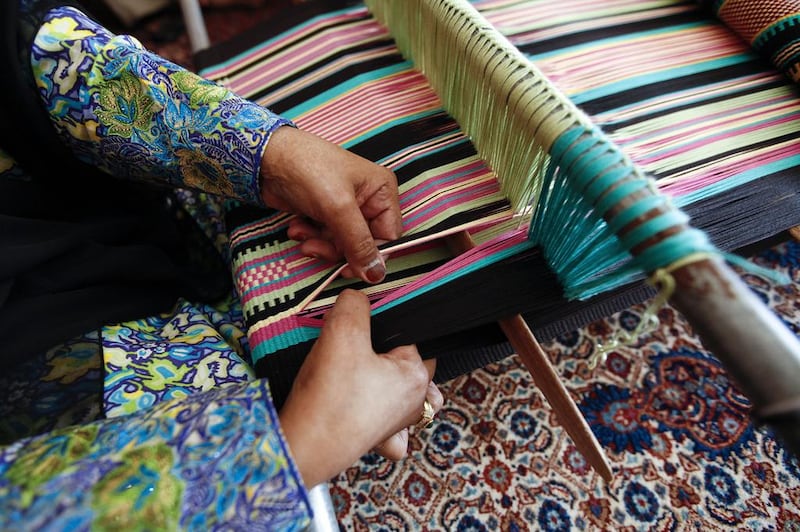In my local sewing store, you can get a glimpse of talents that are too often hidden. There are people working away creating abaya designs, embroidering pillowcases and creating pieces of art that are a mix of tradition and modern practicality.
This is the kind of craft that can win the Victoria and Albert Museum’s Jameel Prize, an international award for contemporary art and design inspired by Islamic tradition.
Yet these arts were once practised in everyday life around the Muslim world. From carpetmaking to stylised lace work and calligraphy, there used to be many artisans who kept the flow of beauty, culture and tradition alive. They also kept society in check by reminding them of their traditions and their value.
One of the most recent examples of this is the six-storey mural by French-Tunisian "calligrafitti" artist eL Seed in Sharjah. At first glimpse, one is dazzled by the Arabic words that swirl up across a building. Then it poses the question: Can you read it? Do you understand? The words – from the Emirati poem Keyif Memsakum attributed to Ahmed Bu Sineeda – laments how local culture is disappearing like birds in flight.
This became painfully evident when I visited the Faith and Worship exhibit at Emirates Palace in 2009. There, I saw headscarves with intricate embroidered flowers in shimmery golden threads. I then realised that these were the origin of the floral prints worn by Turkish women and were once hand-sewed. Seeing them, I felt a sense of loss and sadness.
"The best way to preserve a tradition is to make it adapt to the current time. This way, it will be appreciated and understood in the way that it was meant to be," said Nasser Al Salem, whose work Kul, was the winner of the 2013 Jameel Prize.
After seeing this work and the amazement and interest that it inspired in children, I began to wonder why this isn’t taught in schools. There are many calligraphers in the UAE and across this region, yet Islamic arts are so often absent in school curriculums.
Many arts that form part of the Islamic tradition use transferable skills. When I was struggling to get my child to wrap her head around some mathematical concepts, I found a solution by looking at the four steps of making zakhrafah. These are the floral prints that are seen on the Iranian tiles used in some mosques and can also be found in Qurans.
It is possible to create a beautiful pattern by drawing squares, triangles and then circles. One can use square roots, cubes and radius and diameter equations to find the best proportions.
The same goes for sewing – if you understand how many loops are needed, where to place them, and how much thread and time is necessary. However, the context must be created. This is when the traditions of art come in.
Among Emirati traditions is zari – the addition of gold and silver thread to finely woven netting that is worn on special occasions. Today, these have been replaced with stickers or glitter glue that is ruined after a few washes.
My daughter recently took up weaving on a traditional loom, and she works on this every day. She learnt at a class given by Maraya Art Centre in Sharjah. These two sessions weren’t enough. To improve, she needs time, a teacher and a little competition. This is where schools could come in and help keep a tradition current.
One artist who has excelled in innovating around tradition is Faig Ahmed. His Jameel Prize-winning carpet, Pixelated Tradition, is a play on computer- generated images and Azerbaijani carpet making.
The carpet begins in a traditional way, but then it becomes pixelated, as if the upper portion is still downloading on to a computer screen. But the most amazing thing is that, if you take a photographof it in a certain way, the completed image appears. Who needs to learn computer code if you can do that?
Maryam Ismail is a sociologist and teacher who divides her time between the US and the UAE





